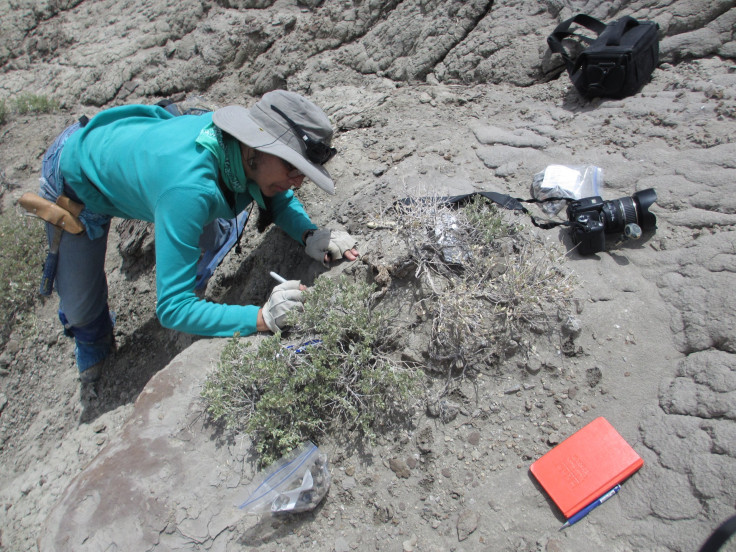Large Vegetarian Dinosaurs Ate Shelled Animals Too, Their Feces Suggests
The largest dinosaurs that roamed the Earth before a mass extinction event caused by an asteroid strike wiped them out (and 75 percent of all life on the planet at the time) were all herbivores, that is, they were vegetarians. But that well-established fact is being challenged by a new finding: at least some of the largest herbivore dinosaurs also ate crustaceans, or shelled animals.
Ancestors of modern-day crustaceans — which have hard exoskeletons, such as crabs, lobsters, shrimp and crayfish — were rich sources of proteins and calcium, and ingesting them could have been linked to dinosaurs’ reproductive activities, according to researchers who made the discovery in Utah’s Grand Staircase-Escalante National Monument.
“From what we know about dinosaurs, this was a totally unexpected behavior. It was such a surprising discovery we wondered what the motivation could have been,” Karen Chin, curator of paleontology at the Museum of Natural History in the University of Colorado, Boulder, said in a statement Thursday. She was invited to the excavation site by a team from the Denver Museum of Nature & Science who were digging there.

The discovery was made using corpolites, which are fossilized feces. Examining the Utah corpolites, some of which were about two gallons in volume, Chin concluded they likely came from hadrosaurs — a kind of duck-billed dinosaurs. The corpolites comprised mainly of “jumbled fragments of rotting wood” but some of them also held “thick bits and pieces of fossilized shell, an indication crustaceans were living in the decaying, coniferous wood.”
Crustacean shells were found in at least 10 corpolite samples that were collected from three different stratigraphic layers spread across 13 miles in the national monument, leading Chin to think the hardy animals were not mistakenly consumed by the herbivorous dinosaurs.
“If we found one coprolite with a crustacean fossil in it, that would be a really interesting scientific discovery. But it wouldn't necessarily indicate a recurring feeding behavior. We now have multiple coprolites with crustacean fossils, showing that at least some types of herbivorous dinosaurs occasionally engaged in this unanticipated feeding strategy. … While it is difficult to prove intent regarding feeding strategies, I suspect these dinosaurs targeted rotting wood because it was a great source of protein in the form of insects, crustaceans and other invertebrates,” Chin said in the statement.
The size of the shells found in the fossilized feces indicates the crustaceans were larger than two inches in size, and that each individual was between 20 and 60 percent the width of the beak on common hadrosaurs.

“If we take into account the size of the crustaceans and that they were probably wriggling when they were scooped up, the dinosaurs would have likely been aware of them and made a choice to ingest them,” Chin explained.
The fact that present-day birds — the only surviving dinosaurs — increase their protein and calcium intake during breeding season to improve their chances of successful reproduction also led credence to Chin’s theory about why the hadrosaurs could have been eating crustaceans despite their otherwise vegetarian diet.
During the Cretaceous period when hadrosaurs were commonplace, Utah was likely next to a sea coast or near one. The exact nature of the crustaceans they consumed has not been determined, but fossil crab claws dating to a slightly older time have been found in the same area.
The researchers have published a paper on their findings that appeared Thursday in the journal Scientific Reports.
© Copyright IBTimes 2024. All rights reserved.





















